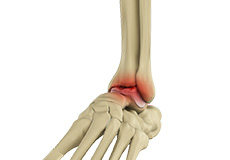
The foot and ankle have numerous bones, ligaments, tendons, and muscles. Pain in the foot/ankle is most commonly associated with disease, deformities, and injuries. The providers at CORE understand how the foot/ankle can limit your daily activities and we are committed to providing you with the latest advancements in lower extremity treatments.
Foot & Ankle Procedures
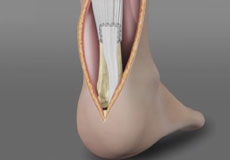
Achilles Tendon Repair
The surgery is usually performed as an outpatient procedure, under a nerve block and sedation. An incision is made at the back of your leg. Your surgeon will stitch the torn tendon back together with strong sutures. Your surgeon may reinforce the Achilles tendon with other tendons depending on the extent of the tear.
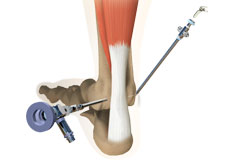
Ankle Arthroscopy
Ankle arthroscopy is a minimally invasive surgical procedure in which an arthroscope, a small, soft, flexible tube with a light and video camera at the end, is inserted into the ankle joint to evaluate and treat a variety of conditions.
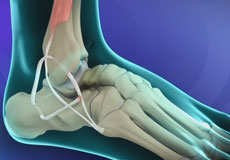
Ankle Ligament Reconstruction
Ankle ligament reconstruction may be performed arthroscopically under general anesthesia. Your surgeon will make small incisions in your ankle. A tiny camera and a few special instruments are inserted through the incisions to repair and strengthen the ligaments.
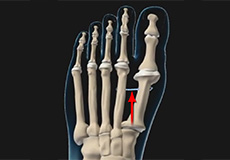
Bunionectomy
A bunionectomy is a surgical procedure to remove a bunion. A bunion, also called a hallux valgus, is an enlargement of bone or soft tissues around the joint at the base of the big toe that results in the formation of a bump. The bone that joins the big toe with the first metatarsal bone thickens and enlarges, tightening the tendons, which in turn causes the base of the big toe to angle out resulting in a painful bony deformity.

Foot Reconstruction
Foot reconstruction is a surgery performed to correct the structures of the foot and restore the natural functionality of the foot that has been lost due to injury or illness. Ideally, any foot surgery for reconstruction is done to improve the appearance and function of the foot so that you can maintain your quality of life.
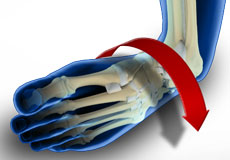
Ankle Instability Surgery
Ankle instability is a chronic condition characterized by the recurrent slipping of the outer side of the ankle. Instability is generally noticed during movement of the ankle joint, but can also occur while standing.
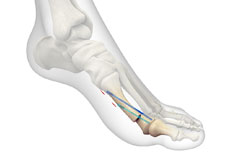
Minimally Invasive Bunion Surgery
Minimally invasive bunion surgery, also known as keyhole bunion surgery, is a procedure to treat a foot condition called a bunion or hallux valgus. During minimally invasive bunion surgery, a few small incisions are made to access the bone around the bunion, as opposed to a much larger incision made during an open bunion surgery that cuts across layers of tissue around the bone, causing more postoperative pain, a larger scar, and damage to the surrounding soft tissues.
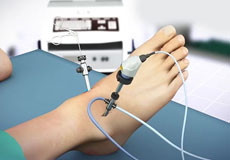
Minimally Invasive Foot Surgery
Minimally invasive foot surgery (MIFS) uses the latest advanced technology to treat foot and ankle pain caused by a variety of conditions. Special surgical instruments, devices, and advanced imaging techniques are used to visualize and perform the surgery through small incisions. The aim of MIFS is to minimize damage to the muscles and surrounding structures, enabling a faster recovery with less pain.
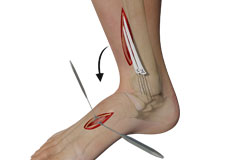
Tendon Transfer
In a tendon transfer procedure, a healthy tendon is transferred to replace the damaged tendon and restore the normal movement of the foot.
Foot & Ankle Conditions

Foot and Ankle Arthritis
Arthritis is the inflammation of joints as a result of degeneration of the smooth cartilage that lines the ends of bones in a joint. This degeneration of the cartilages leads to painful rubbing of the bones, swelling, and stiffness in the joints, resulting in restricted movements.

Bunions
A bunion is a bony protuberance that appears on the outer surface of the big toe when it angles toward the adjacent toe. It is an extra bone and a fluid-filled sac that grows at the base of the big toe.
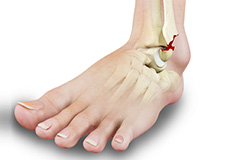
Stress Fractures of Foot and Ankle
A stress fracture is described as a small crack in the bone which occurs from an overuse injury of a bone. It commonly develops in the weight-bearing bones of the lower leg and foot. When the muscles of the foot are overworked or stressed, they are unable to absorb the stress and when this happens the muscles transfer the stress to the bone which results in stress fracture.
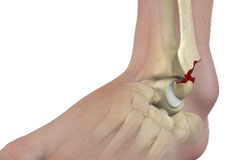
Ankle Fractures
An ankle fracture is a painful condition where there is a break in one or more bones forming the ankle joint. The ankle joint is stabilized by different ligaments and other soft tissues, which may also be injured during an ankle fracture.
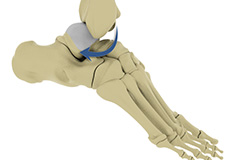
Ankle Dislocation
Ankle dislocation is a condition that occurs when the bones of the lower leg called the fibula and tibia get separated from the talus or ankle bone. This can cause serious damage to the nerves and ligaments surrounding the ankle, leading to a decline in strength and overall health of the leg.

Plantar Fasciitis
Plantar fasciitis refers to the inflammation of the plantar fascia, a thick band of tissue that is present at the bottom of the foot. It runs from the heel bone to the toes and forms the arch of your foot.

Ankle Sprain
A sprain is the stretching or tearing of ligaments. Ligaments connect adjacent bones and provide stability to a joint. An ankle sprain is a common injury that occurs when you suddenly fall or twist the ankle joint, or when you land your foot in an awkward position after a jump.

Achilles Tendinitis
Inflammation of the Achilles tendon is known as Achilles tendinitis or tendonitis. The Achilles tendon is a tough band of fibrous tissue that runs down the back of your lower leg and connects your calf muscle to your heel bone. The tendon is used when you walk, climb, jump, run and stand on your tip toes.
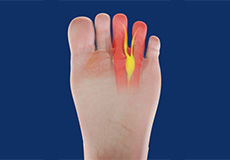
Morton’s Neuroma
Morton’s neuroma refers to a nerve injury that occurs between the toes, usually the third and fourth toes. This causes pain and thickening of the nerve tissue.
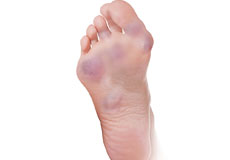
Foot Rheumatoid Arthritis
Arthritis is inflammation in the joint resulting from the degeneration of cartilage causing joint pain, swelling, and stiffness resulting in restricted movements. Arthritis of the foot and ankle joint can occur due to fractures, dislocation, inflammatory disease, or congenital deformity.

Ingrown Toenail
An ingrown toenail is a common and painful condition of the toe. It occurs when the side or corner of the nail grows inwards and penetrates the skin of the toe. Pain is often accompanied by swelling and redness. The big toe is affected most often.
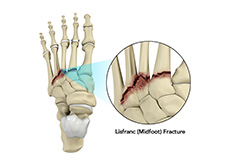
Lisfranc Fracture
The Lisfranc joint or tarsometatarsal joint refers to the region in the middle of the foot. It is a junction between the tarsal bones (bones in the foot arch) and metatarsal bones (five long bones in the foot). Lisfranc fractures can occur due to a fall from a height or a traumatic motor vehicle accident.
Anatomy of the Foot and Ankle
What is the Normal Anatomy of the Foot and Ankle?
The foot and ankle form complex joints that are involved in movement and providing stability and balance to the body. The foot and ankle consist of 26 bones, 33 joints, and many muscles, tendons, and ligaments.
Bones of the Ankle
The ankle joint connects the leg with the foot and is composed of three bones: the tibia, fibula, and talus. The tibia or shinbone and fibula or calf bone are bones of the lower leg, which articulate with the talus or ankle bone, enabling up and down movement of the foot.
Three bony bumps present on the ends of the tibia and fibula form parts of the ankle joint:
- The medial malleolus, formed by the tibia, is found on the inside of the ankle.
- The posterior malleolus, also formed by the tibia, is found at the back of the ankle.
- The lateral malleolus, formed by the fibula, is found on the outer aspect of the ankle.
Bones of the Feet
The foot acts as a single functional unit, but can be divided into three parts: the hindfoot, midfoot and forefoot.
The hindfoot forms the ankle and heel, and is made up of the talus bone and calcaneus or heel bone. The heel bone is the largest bone in the foot.
The midfoot connects the hindfoot to the forefoot, and consists of one navicular bone, one cuboid bone, and three cuneiform bones. The navicular bone is found in front of the heel bone, and the cuneiform and cuboid bones are arranged in front of the navicular bone.
These bones are connected to five metatarsal bones of the forefoot that form the arch of the foot for shock absorption while walking or running. The forefoot is also made up of the toes or digits, formed by bones called phalanges - three in each toe, except the big toe, which has only two phalanges. The big toe has two additional tiny round sesamoid bones in the ball of the foot, which helps in upward and downward movements of the toe.
Ankle and Foot Joints
There are 33 joints in the ankle and foot. They include:
- Hinge joints in the ankle, which allow flexion (bending) and extension
- Gliding joints found in the hindfoot, which allow gliding movements
- Condyloid joints found in the forefoot and toes, which allow the flexion (bending) and extension, adduction, and abduction (sideward movement).
The joints of the foot and ankle provide stability and support the weight of your body, helping you to walk or run, and adapt to uneven grounds.
Soft Tissues of the Ankle and Foot
Our feet and ankle bones are held in place and supported by various soft tissues such as cartilage, ligaments, muscles, tendons, and bursae.
The joint surface of all the bones of the ankle and foot are lined by a thin, tough, flexible, and slippery surface called the articular cartilage, which acts as a shock absorber and cushion to reduce friction between the bones. The cartilage is lubricated by synovial fluid, which further enables smooth movement of the bones.
Ligaments are tough rope-like tissue that connect bones to other bones, and hold them in place, providing stability to the joints. The plantar fascia is the largest ligament in the foot, originating from the heel bone to the forefoot, it extends along the lower side of the foot and is involved in maintaining the arch of the foot. The plantar fascia ligament stretches and contracts to provide balance and strength to the foot. Lateral ligaments on the outside of the foot and medial ligaments on the inside of the foot provide stability and allow up and down movement of the foot.
The foot is made up of 20 muscles that help in movement. The main muscles include:
- Anterior tibial muscle, which allows up and down movement of the foot
- Posterior tibial muscle, which supports the arch
- Peroneal tibial muscle, which controls movement on the outside of the ankle
- Extensors, which enable the ankle to raise the toes just before stepping forward
- Flexors, which stabilize the toes against the floor
- Smaller muscles that help the toes to lift and curl
Tendons are soft tissues that connect muscles to bones. The largest and strongest tendon in the foot is the Achilles tendon, present at the back of the lower leg around the heel bone. Other tendons include peroneal and anterior and posterior tibialis.
Bursae are small fluid-filled sacs that decrease friction between tendons and bone or skin. They contain special cells called synovial cells that secrete a lubricating fluid.
Our Foot & Ankle Specialists
-
 Gregory J. Loren, MDBoard Certified Orthopaedic Surgeon
Gregory J. Loren, MDBoard Certified Orthopaedic Surgeon -
 Ryan C. Meineke, MD Board Certified Orthopaedic Surgeon
Ryan C. Meineke, MD Board Certified Orthopaedic Surgeon






